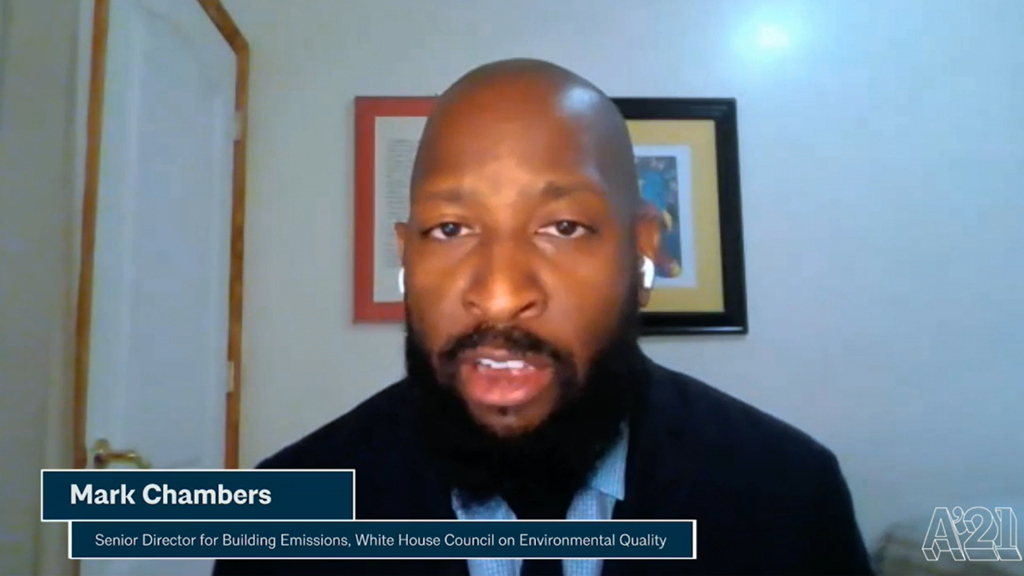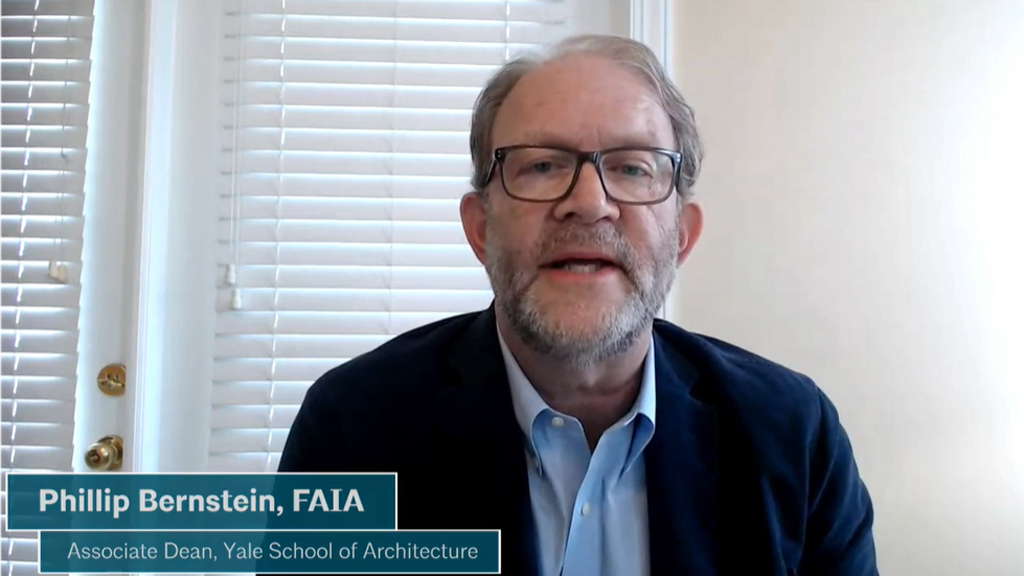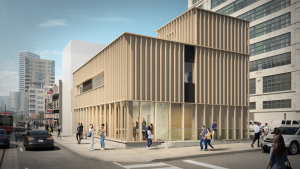At a time of great change, with trillions to be spent on new infrastructure in the U.S., and the U.S. president intent on a green transformation of the economy, it’s imperative that architects lead the way forward.
That was the clear message delivered as panellists led by renowned Yale School of Architecture associate dean and futurist Phillip Bernstein held court during an architecture webinar billed as a One-Hour Tour of the Future. The panel took place Aug. 19, the last day of the American Institute of Architects Conference on Architecture.
Mark Chambers, a senior director for building emissions attached to the White House Council on Environmental Quality, suggested architects have to stand up among their peers in the construction boardrooms and call for progress and change.
“I’m one of those people that believe that architecture and architects are always well positioned to change the world,” said Chambers, leading off discussions. “And I think that it’s a particular opportunity for architects to not only reimagine their role as kind of curators of the built environment for our decarbonized future, but also to push a little bit more.”
Discussions of building design can’t be held without looking at equity and closing gaps related to environmental justice, Chambers said. His role within the Joe Biden administration, he explained, is to put buildings at the forefront as the administration looks to decarbonize the built environment as quickly as possible.
“Also to make sure that we are aligning the work that’s happening in buildings with the work that’s happening to create good-paying jobs all across the country, to be able to make sure that we are moving quickly to clean energy infrastructure for the country, and making sure that we recognize that all of that clean energy is going to flow through buildings,” Chambers said.

To accomplish progressive goals such as the electrification of buildings, he said, architects are going to have to become involved in determining what resources will be needed to get the job done without overburdening the grid and ensuring the jobs associated with decarbonizing buildings are effectively putting more people to work.
It will be architects who will, for example, make sure that rooftops are able to play a larger role in not just producing power but also in reducing heat islands throughout the country, Chambers added.
Bernstein said the implementation of tax incentives and improved building codes are “technical low-hanging fruit” and the administration ought to take a page from the U.K.’s National Construction Strategy which makes the decarbonization of the construction sector a very high priority.
The program spends billions running numerous pilot projects and creating new technology standards using advanced technologies for energy modelling and developing innovations in project delivery models, he said.
Chambers said the government can get involved in “troubleshooting a lot of this for local governments so that designers have more legacy of what it looks like to have an intervention, and not just aspiration.”
“I don’t think that we have often owned our power as a voice in the built environment,” Chambers said, noting young architects must be encouraged to become highly active. “And I think that being able to make sure that we are calling upon our industry organizations to collectively drive towards some of these larger decarbonization and equity goals, simultaneously, is going to be a really critical.”
Panellist Liz Haggerty, president of Oldcastle Building Envelope, said architects are in the perfect position to drive a new era of inclusiveness.
“What we can do collectively to really drive better equity and inclusion?” she asked.
“I think we have a really unique situation with the spaces that architects design, the buildings that our contractors build and the products that we provide, the creative solution to really be a driver of inclusion, equity and well-being.
“So access to the outdoors, natural lighting, focus on security are all things that I think we really could work together and collaborate on.”
Panellist Jonathan Jones, director of capital projects for the Brooklyn Academy of Music, meanwhile, took inclusion in another direction. Cities were neglected in the ‘60s through the ‘80s and now it’s rural America that is being neglected, he said. Architects have the responsibility to develop links between “city and country” with projects like railroads and other public transit. The silos that prevent communication have to be eliminated, he said.
“The designers have the vision, and our friends in the construction industry know how to get these things done,” said Jones.
Follow the author on Twitter @DonWall_DCN.










Recent Comments
comments for this post are closed